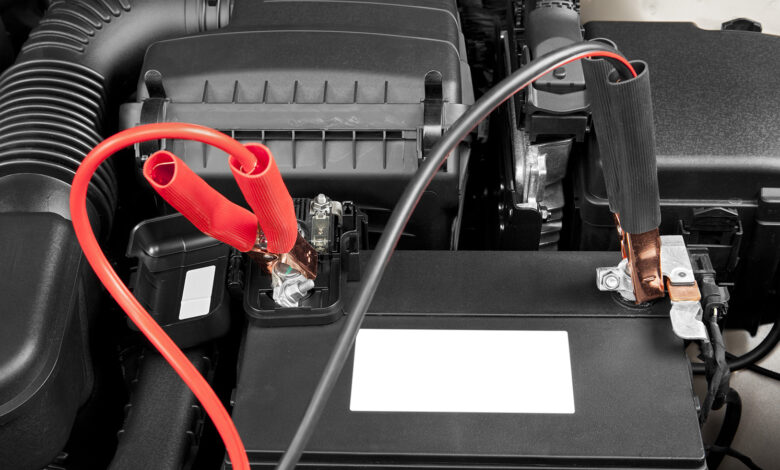How to Safely Put Jumper Cables on a Hyundai Elantra: A Step-by-Step Guide

A dead car battery can be a frustrating experience, but knowing how to jump-start your Hyundai Elantra can get you back on the road quickly. Whether you’ve left your lights on, endured extreme weather, or simply need a boost, jumper cables are your best friend in such situations. In this step-by-step guide, we’ll walk you through the process of safely putting jumper cables on a Hyundai Elantra, ensuring that you can get your vehicle running again with ease as per RoadRoverz.
What You’ll Need
Before you begin, gather the following items:
- Jumper Cables: Ensure you have a set of good-quality jumper cables with sturdy clamps.
- A Functioning Vehicle: You’ll need another vehicle with a fully charged battery to assist with the jump-start.
- Safety Gear: Safety should always be a priority. Wear safety glasses and protective gloves to prevent accidents and battery acid exposure.
- Owner’s Manual: Keep your Hyundai Elantra’s owner’s manual handy in case you need to refer to specific instructions for your vehicle.
Step 1: Position the Vehicles
- Park both vehicles close enough that the jumper cables can reach each battery without stretching. Make sure they are not touching.
- Ensure both vehicles are in “Park” or “Neutral” and turned off.
Step 2: Identify the Batteries
- Locate the battery in your Hyundai Elantra and the battery in the assisting vehicle. In the Elantra, the battery is usually under the hood.
- Identify the positive (+) and negative (-) terminals on both batteries. They are typically marked in red for positive and black for negative.
Step 3: Connect the Jumper Cables
CAUTION: Before proceeding, be cautious of moving engine parts, belts, and fans under the hood.
- Connect Positive Cable (Red):
- First, connect one end of the positive (red) jumper cable to the positive terminal on your Hyundai Elantra’s battery.
- Then, attach the other end of the positive cable to the positive terminal of the assisting vehicle’s battery.
- Connect Negative Cable (Black):
- Connect one end of the negative (black) jumper cable to the negative terminal of the assisting vehicle’s battery.
- Now, instead of connecting the other end of the negative cable to your Hyundai Elantra’s battery, find an unpainted metal surface under the hood of your Elantra. This is known as a ground point.
- Important: Avoid connecting the negative cable directly to your Elantra’s battery. Attaching it to a ground point minimizes the risk of sparks near the battery.
- Once you’ve found a suitable ground point, secure the negative cable.
Step 4: Start the Assisting Vehicle
- Start the assisting vehicle and let it run for a few minutes to allow the battery to charge your Elantra’s dead battery.
Step 5: Attempt to Start Your Hyundai Elantra
- After letting the assisting vehicle run for a few minutes, try starting your Hyundai Elantra. If it starts, that’s great news!
Step 6: Disconnect the Jumper Cables
- Once your Elantra starts, begin the disconnection process.
- Remove the Negative Cable (Black):
- Start with the negative cable (black) that’s connected to the ground point in your Hyundai Elantra. Carefully remove it.
- Next, detach the other end of the negative cable from the negative terminal of the assisting vehicle’s battery.
- Remove the Positive Cable (Red):
- First, remove the positive cable (red) from the positive terminal of the assisting vehicle’s battery.
- Finally, disconnect the positive cable from your Hyundai Elantra’s battery.
Step 7: Take a Short Drive
- After successfully jump-starting your Hyundai Elantra, it’s a good practice to take a short drive. This helps recharge your battery and ensure it’s functioning correctly.
Tips for a Safe Jump-Start
- Make sure the assisting vehicle’s engine is running while jump-starting your Hyundai Elantra.
- Do not allow the jumper cable clamps to touch each other while they are attached to the battery terminals.
- Ensure that the cables are placed away from any moving parts in the engine bay.
- Avoid jump-starting a frozen battery, as it can be dangerous.
- If your vehicle does not start after several attempts, there may be a more significant issue, and you should consult a mechanic.
When to Replace Your Battery
While jump-starting your vehicle can provide a temporary solution, it’s essential to address the underlying issue. If your Hyundai Elantra frequently requires jump-starts, it may be time to consider replacing the battery. Car batteries have a limited lifespan, typically around 3-5 years, depending on usage and climate. If your battery is older or frequently experiences problems, it’s a wise investment to replace it to avoid future inconveniences.
Conclusion
Knowing how to safely put jumper cables on a Hyundai Elantra is a valuable skill for any driver. With the right equipment, precautions, and careful steps, you can quickly and safely jump-start your vehicle when the need arises. Remember that jump-starting should be a temporary solution, and addressing the underlying battery issue is crucial for long-term reliability. Whether you’re in a parking lot, at home, or on the roadside, this knowledge can get you back on the road and on your way to your next destination.



